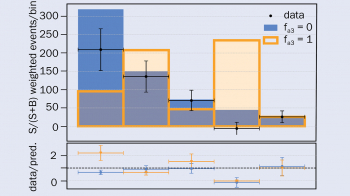By B Lee Roberts and William J Marciano (eds.)
World Scientific
Hardback: £113 $164 E-book: $213

In December 1947, Julian Schwinger wrote a letter to the editor of Physical Review, wherein he reports in a mere five paragraphs that he has found “an additional magnetic moment associated with the electron spin”. He gives the value as α/2π=0.00116 and states that it is “the simplest example of a radiative correction” in the new theory of QED.
We have come a long way since Schwinger’s letter. Toichiro Kinoshita has computed the anomalous magnetic moment of the electron up to the tenth order. Nature has revealed further mysteries in the intervening years, including the existence of the muon, with which to test our theories. Famously, the Brookhaven measurement of the anomalous magnetic moment of the muon shows an approximately 3σ deviation from the theoretical prediction of the Standard Model. Experiments have been searching for the CP-violating electric dipole moment as well, with many more experiments coming.
Lepton Dipole Moments, a review volume edited by Lee Roberts and William Marciano, begins with a historical perspective by Roberts and is followed by many excellent review articles. Articles are written by leaders of the field: Andrzej Czarnecki and Marciano on new physics and dipole moments, Michel Davier on g-2 vacuum polarization issues, Dominik Stoeckinger on new physics in g-2, Yasuhiro Okada on models of lepton-flavour violation, Eugene Commins and David DeMille on the electric dipole moment of the electron, and many more.
One reason that lepton moments are interesting to pursue, even during these heady times of high-energy LHC collisions, is their sensitivity to “chirality enhanced” contributions from new physics. In the case of supersymmetry, some large-tanβ theories can yield parametrically larger supersymmetric contributions than Standard Model contributions, increasing sensitivity to higher scales than usual electroweak precision tests allow. An analogous situation occurs for theories with large, new flavour- or CP-violating effects. Lepton dipole moment experiments are reaching levels of sensitivity that will make or break theories. For example, even theories of baryogenesis, which seem far remote at first thought from the vagaries of lepton dipole moments, “will be put to the ultimate test with the next generation of experiments”, as Maxim Pospelov and Adam Ritz rightly explain.
The energy frontier is not the only place to put fundamental physics under extreme test, as this volume attests. Roberts and Marciano have put together an excellent survey of lepton dipole moments and their certain power to change our world view whatever may come.







